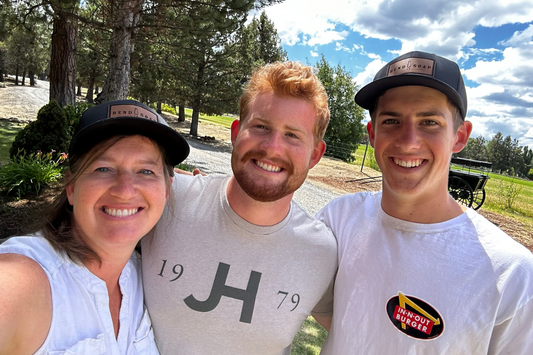Quick Summary
Vitamin D is more than just the sunshine vitamin—it’s a skin and immune system essential. If you’re battling eczema, dryness, or stubborn irritation, low Vitamin D might be the hidden culprit. This blog explains how to naturally boost your Vitamin D levels through intentional sun exposure, nutrient-rich foods like egg yolks and salmon, and simple lifestyle tweaks. You’ll also learn why fat-soluble D needs healthy skin and gut support to absorb properly, and how goat milk products can help restore moisture and calm inflammation from the outside in.
Ready to ditch the guesswork and soak up the sunshine vitamin? Say hello to your stress-free guide to boosting Vitamin D naturally.
The older we get, the more we realize how essential certain vitamins are for our overall well-being. Vitamin D plays a role in everything from our mood and immunity to how our skin feels and functions, but so many of us are deficient without even knowing it.
If you’re dealing with eczema, irritation, or dry patches that won’t quit, low Vitamin D could be part of the problem. In this guide, we’re revealing everything you need to know about how to boost your Vitamin D levels—and why it’s something you’ll want to prioritize.
Why Boosting Vitamin D Matters… A Lot
Many people think of bone health when they think about Vitamin D, but that’s only one piece of the puzzle. Unlike other vitamins, it’s actually a hormone—one that supports our immune function, skin barrier, energy, mood and even our other hormones.
That’s why it’s especially important for anyone dealing with dryness, breakouts, or eczema flare-ups.
Even if you’re eating clean and spending tons of time outside, it’s still possible to have Vitamin D deficiency. Why? Because where you live, how much sunscreen you wear, and even your skin tone can affect how your body converts sunlight into usable Vitamin D.
If you’ve been feeling “off,” there’s a chance that low Vitamin D could have something to do with it. And the good part? You don’t need a prescription to optimize your levels.
Vitamin D and Sensitive Skin: Your Secret Weapon Against Flare-Ups
If your skin feels angry, inflamed, or like it’s always one wrong product away from a full-blown meltdown, it’s worth looking at your Vitamin D levels. This powerhouse nutrient plays a huge role in skin barrier function, inflammation control, and how your skin heals after damage.
Here’s how Vitamin D supports healthy skin:
- Reduces inflammation – Low levels of Vitamin D have been linked to chronic inflammatory skin conditions, including eczema and psoriasis.
- Supports your skin barrier – Vitamin D helps your skin retain moisture and repair itself, which is key if you’re dealing with dryness or irritation.
- Helps fight bacteria – Vitamin D supports antimicrobial peptides that protect the skin from infection, which can be helpful for acne or eczema-prone skin.
- May reduce flare-ups – Some studies suggest that adequate vitamin D levels can reduce eczema symptoms and flare frequency.
If you’ve been moisturizing religiously, using clean products, and still feel like your skin is struggling—this might be the missing piece. Of course, supporting your skin topically with nourishing, toxin-free ingredients makes a big difference too.
That’s why we love goat milk soaps and lotions that are made simply to work with your skin and give it a chance to calm down while your body gets the nutrients it needs.

How to Get Vitamin D From the Sun (Without Overdoing It)
We’re big fans of sunshine around here, and not just for the warmth. It’s super effective at boosting vitamin D levels and doesn’t cost a penny. But most of us have been taught to fear the sun, lather up in heavy sunscreen 24/7, and stay indoors as much as possible.
As a result, we’ve got a generation of women who are chronically low on Vitamin D. Not exactly ideal, right? The key isn’t hiding from the sun, it’s being smart and intentional with sun exposure.
Here’s how to do it the crunchy way:
- Aim for 10–30 minutes of direct sunlight on your skin (face, arms, or legs) a few times per week.
- Go bare (without sunscreen) during that time if possible, then apply your mineral SPF afterward if you’re staying out longer.
- Mid-morning to early afternoon is usually best for Vitamin D production.
- The farther you live from the equator, the more sunlight you may need.
- Get outside without sunglasses once in a while—your eyes can actually help signal Vitamin D production too.
Keep in mind: windows block UVB rays, which means sunbathing behind the glass doesn’t count. We’re not necessarily anti-sunscreen—especially if you’re going to be out for long stretches. But if your SPF is full of synthetic chemicals that block all UVB rays, your body won’t be able to make vitamin D efficiently.
That’s why we recommend using non-toxic sunscreen with zinc oxide or titanium dioxide. It’s better for your skin, your hormones, and your Vitamin D levels. After soaking up the sunshine, give your skin some love with a gentle cleanser that won’t strip your moisture barrier.
Bend Soap’s Goat Milk Soap is rich in natural fats and vitamins that help replenish and soothe sun-exposed skin, especially if you’re prone to irritation.

Best Foods for Boosting Vitamin D
While the sun is your best natural source of vitamin D, there are a few nourishing foods that can help give your levels a boost—especially when sunshine is limited, like during the winter months. Here’s what to add to your plate:
- Egg yolks – Choose pasture-raised eggs for higher D levels.
- Wild-caught fish – Look for fish like salmon, sardines, and mackerel that are packed with healthy fats and vitamin D3.
- Mushrooms – Especially UV-exposed varieties like maitake and shiitake.
- Liver – Not for everyone, but it’s a powerful nutrient-dense option.
- Cod liver oil – Old-school and slightly intense, but rich in both vitamins D and A.
Some foods are fortified with Vitamin D (like dairy, orange juice, and cereal), but we prefer to get it from natural sources when possible. Fortified just means the nutrient was added after processing—not exactly the crunchy dream.
Remember: Vitamin D is fat-soluble, so pair these foods with healthy fats (like avocado or olive oil) to help your body absorb them even better.
Lifestyle Tips for Boosting Vitamin D
Now that you’ve got the sun and food part down, let’s layer in a few lifestyle tweaks that can help your body actually use all that beautiful Vitamin D you’re giving it.
Here are some easy ways to boost your Vitamin D levels:
- Start your morning outside. Sip your coffee on the porch or take a short walk around the block, even on cloudy days.
- Ditch toxic skincare that clogs your pores or blocks absorption. Your skin is your largest organ, so treat it like a living, breathing filter.
- Keep your gut happy. A healthy microbiome helps your body absorb nutrients better, including Vitamin D.
- Moisturize your skin barrier. Healthy skin supports healthy function. Look for a natural, nutrient-rich moisturizer like Bend Soap’s Goat Milk Lotion to help your skin thrive.
- Stack your habits. Move your body, eat nutrient-dense meals, and get some sun—all in one morning. That’s a perfect recipe for a Vitamin D-boosting day.
You don’t have to change your whole life overnight. Small changes done consistently can lead to some major results. Just do what you can!

Soak up the Sunshine Vitamin All Year Long
If you’re feeling low-energy or your eczema is flaring up, boosting Vitamin D might be one of the most impactful steps you can take to start feeling better. You don’t need to add to the supplement graveyard in your pantry or stock the bathroom shelf full of synthetic creams that burn. Sometimes, the most powerful changes are the most natural ones.
Already made Vitamin D part of your daily routine? Share your favorite sunny-day habit or D-rich meal in the comments below. We’d love to hear from you!
Want more tips on supporting your skin and living a low-tox lifestyle? Browse The Sudsy Scoop for crunchy swaps, non-toxic guides, and natural skincare insights.
Frequently Asked Questions
What are signs of low Vitamin D levels?
Common signs include fatigue, mood swings, weakened immunity, and dry or inflamed skin. Eczema flare-ups and slow healing may also be linked to deficiency.
How can I boost Vitamin D naturally?
Spend 10–30 minutes in the sun a few times per week without sunscreen, eat vitamin D-rich foods like egg yolks and wild-caught fish, and support skin and gut health for better absorption.
Is it safe to get sun without sunscreen?
Yes, in moderation. Brief, unprotected sun exposure (10–30 minutes) can help your body produce Vitamin D. Apply mineral sunscreen if staying out longer.
What foods are best for increasing Vitamin D?
Egg yolks, wild-caught salmon, sardines, UV-exposed mushrooms, cod liver oil, and liver are excellent sources. Pair with healthy fats for better absorption.
How does Vitamin D help with skin conditions like eczema?
Vitamin D reduces inflammation, strengthens the skin barrier, and supports antimicrobial defenses—making it helpful for conditions like eczema and chronic dryness.




